Why All Stories Are Myth—and How They Transform Us
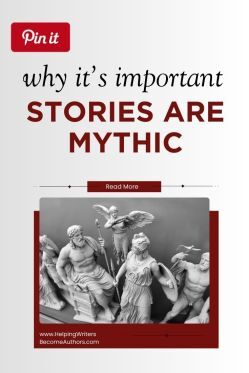 Stories are more than just entertainment. They’re also more than just reflections of real life. This is because, at its core, narrative is myth. Whether you’re crafting epic fantasy, gritty crime drama, or cozy rom-coms, deep archetypal patterns always echo through your characters, plots, and themes. Story is the theater of the psyche. It is a dream we collectively dream, in which each character and conflict embodies a part of ourselves. When we recognize this hidden foundation, we can tap this archetypal power to access the kind of storytelling that not only captivates readers but also transforms both their inner lives and our own.
Stories are more than just entertainment. They’re also more than just reflections of real life. This is because, at its core, narrative is myth. Whether you’re crafting epic fantasy, gritty crime drama, or cozy rom-coms, deep archetypal patterns always echo through your characters, plots, and themes. Story is the theater of the psyche. It is a dream we collectively dream, in which each character and conflict embodies a part of ourselves. When we recognize this hidden foundation, we can tap this archetypal power to access the kind of storytelling that not only captivates readers but also transforms both their inner lives and our own.
A few weeks ago, I shared a post that struck a chord with many of you—about my deep desire to witness the return of “soulful storytelling.” Specifically, I wrote about my personal dissatisfaction and even boredom with contemporary filmmaking. In that post, I talked about wanting to return to stories of subtextual depth, emotional earnestness, and goodheartedness (among other qualities). In pondering on this further via the many thoughtful exchanges I got to have with all of you in the comments section on that post, I realized there are more layers to the shifts we have seen in modern storytelling—and the next shift I believe we will soon see.
One of those layers is the tension we often feel, but perhaps do not always recognize, between hyper-realism in fiction and storytelling’s inherently mythic foundation. I’m talking about the differences between stories that dutifully mimic or even exaggerate the causality of everyday life and those that draw upon the timeless archetypal patterns of the psyche.
When asked to define “story,” we may reach for the convenient answer that story is a replication of real life. But this, I will posit, is not actually true. Throughout history, we have increasingly dressed our stories in the verisimilitude of realistic details and the self-consciousness of our minds’ inner workings. But underneath all the hyper-realism, the true and archetypal shape of story itself remains something quite mythic. It is much less a product of our conscious minds—our conscious and scientific understanding of the world’s workings and our place in it—and much more a product of our unconscious minds—our symbolic and dreaming selves.
Recognizing storytelling (no matter the genre) as inherently mythic allows us, as storytellers, to walk onto a much bigger stage. We exit the relatively small stage of the self we know—the conscious self—and enter the vastness of the self that lives beyond consciousness and therefore beyond the restricted understanding allowed by the ego.
When we approach story as something inherently mythic—an archetype that exists outside and beyond humanity’s “creation” of it as an artform—we regain the capacity to create stories that touch the deepest parts of ourselves to create not just transformation, but initiation.
In This Article:Story as a Primordial Force: The Mythic Foundation of NarrativeThe Theater of the Psyche: Every Character Is YouArchetypes as Living Forces in StorytellingStory as a Living Dream: Why All Stories Are MythStory as a Primordial Force: The Mythic Foundation of NarrativeFrom the far depths of human memory, story comes to us as a primordial force. Indeed, human memory itself is a story. Before we packaged stories for $20 mass consumption—before movies, before novels—story came to us as oral myths, ritual dramas, stone etchings, and catalysts of initiation.
Nowadays, storytelling is a highly specialized skill set. We come to sites like this one to study beat sheets and timing. We divide stories into highly specialized genres and check tropes off a list. We come to story as if it is something we can master. But in approaching story like this, we risk missing not just the deeper initiation story wants to offer each of us. We also risk missing out on the best possible stories we could be sharing with our own audiences.
I want to talk about one trend in particular that I see in modern storytelling. In itself, this trend is not problematic. But when too much emphasis is placed on it, it can create a polarized experience of story that can weaken its deeper impact. This trend, as I hinted previously, is hyper-realism. It is the trend—all but ubiquitous now—of faithfully recreating modern life on the page or the screen. In some ways, we might say it is “showing” rather than “telling.”
Again, I’m not saying this approach is wrong. I love detailed fiction that shows me the story world with such dimensionality that I’m there. I love deep POVs that faithfully mine and recreate the complexities of human interiority—everything from memory to motive.
But my feeling is that when this hyper-realism is not founded upon the deeper mythology of story itself, we often risk losing the forest for the trees. I will even go so far as to say this approach is a driving force behind the type of modern storytelling that carries characters and audiences to destinations awash with sophisticated despair or, at best, ambiguous apathy.
This is not to say mythic stories do not confront their fair portion of darkness and despair. But as I continue to study story as an archetype, it is my belief that these old stories (everything from the creation stories to The Odyssey to old folk tales like Little Red Riding Hood) speak to us, first and always, in metaphor and symbol. Certainly, as we explore the continuity with which the shape of story comes to us over the eons, I believe we can see that story itself is much more than simply a mirror of life. It is an initiatory force.
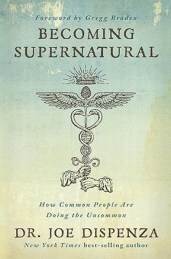
Becoming Supernatural by Dr. Joe Dispenza (affiliate link)
At the end of his book Becoming Supernatural, Dr. Joe Dispenza defined initiation:
I believe we are on the verge of a great evolutionary jump. Another way to say it is that we are going through an initiation. After all, isn’t an initiation a rite of passage from one level of consciousness to another, and isn’t it designed to challenge the fabric of who we are so we can grow to a greater potential?
Story is a symbolic map of transformation. It is a blueprint for growth and change. I wrote in the previous post about how I will never be satisfied with even one single story that does not challenge me in some way—because, for me, that is what I look for in a story experience. I look for that frisson of electricity, that tinge of awe, as I sense however faintly that I am entering an uncanny space—a wyrd space.
In the old Norse, the concept of “wyrd”—from which we get our word “weird”—indicated not just the uncanny, but the fated. In story, what I seek for myself are fated encounters. I seek shatterpoints of destiny that fracture, however slightly, reality as I know it.
The Theater of the Psyche: Every Character Is YouEvery story holds the seed of this transformational power. It doesn’t matter the medium or the genre. This potential is latent in all stories—whether about hellbent mobsters or romantic HEAs or comedic farces or historical reproductions or fantastical allegories. However, whether and how well this potential is realized depends on the author. To some extent, it depends on the author’s conscious awareness of and ability to empower the story’s mythic sub-structure. But I would say, even more perhaps, it depends on the author’s personal touchstone with the mythic subconsciousness that lives within them.
If we think of story as being like a dream, we are not too far from the truth. Story—true, deep, initiatory story—is something that arises from an inner depth existing beneath and beyond egoic consciousness. We are more likely to find these stories by “channeling” them than by trying to brainstorm them.
Like dreams, stories are innately symbolic—even, and perhaps especially, when we do not realize it. As authors, we cannot always explain where our best work comes from. Often, it may seem it does not come from us. It was given to us. We are the first to be changed by it. Indeed, we may spend the rest of our lives not quite understanding it.
Also like dreams, I believe it is useful to take one more step back from the hyper-detailed and hyper-realistic showing of fiction. Until we do so, we are likely to think our stories are peopled by a varied and dimensional cast, perhaps purposefully created by us to showcase a vast number of perspectives and lifestyles. When we go deeper, we may see instead that the deepest and most mythic stories represent a single psyche—perhaps the author’s, perhaps a bit more specifically the protagonist’s, but ultimately the collective psyche.
Some schools of dream interpretation remind the dreamer to consider that everything that shows up in a dream is you. That is, it is not your father in the dream; it is some aspect of your own psyche wearing the face of your father. The same can be said of a story. Every character in the story—indeed, everything in the story—is an aspect of one psyche. The hero, the antagonist, the love interest, the mentor—all are representations of a unified psychological perspective and experience.
The deep resonance of stories that work—stories that initiate us—is the result of this inner unity. Audiences resonate because they’re watching externalized inner conflicts of the self. If you start examining stories from this perspective, you may be amazed at what you discover.
A quite obvious example is The Lord of the Rings. I particularly remember the first time I saw the scene in Fellowship of the Ring, in which the characters flee underground into the Mines of Moria, where they awaken goblins and trolls in the darkness. In so many ways, this can be seen as a descent into the unconscious and a confrontation with the shadow monsters who reside forgotten there.
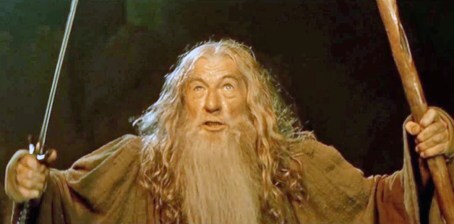
The Balrog confrontation symbolizes the psyche’s descent into shadow.” (The Lord of the Rings: The Fellowship of the Ring (2001), New Line Cinema.)
Another vivid example of this inner-psyche theater can be found in Hayao Miyazaki’s Spirited Away. Nearly every character in Chihiro’s journey can be read as an aspect of the self.
Her parents’ careless greed is the egoic appetite that abandons her to the unconscious.The enormous baby, Boh, is the unruly inner child who must be reparented before growth can occur.Yubaba, the domineering mistress of the bathhouse, embodies the controlling authority of the superego.Haku functions as the animus—an inner guide and companion who helps Chihiro navigate transformation.No-Face represents the shadow self: a ravenous, distorted self that can only be healed through compassion and reintegration.In this light, Spirited Away becomes not simply a fantastical coming-of-age tale, but a symbolic map of psychological wholeness.
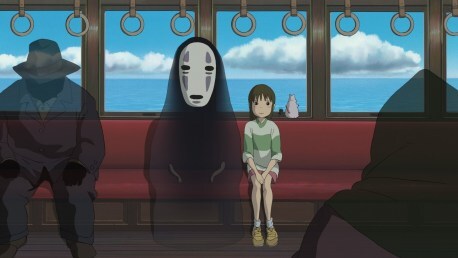
Miyazaki’s Spirited Away shows how every story is myth: each character symbolizes an aspect of the self, from the shadow in No-Face to the inner child in Boh. (Spirited Away (2001), Studio Ghibli.)
And in a more realistic example, we can see how the various characters in Pride & Prejudice represent facets of a single psyche:
Elizabeth and Darcy embody the central tension between pride and humility, shame and love.Jane reflects openness and generosity.Lydia personifies unchecked impulse.Mr. Collins plays the part of obsequious conformity.Lady Catherine stands as rigid authority.Read this way, Austen’s novel becomes not just a social comedy but an archetypal drama of the self learning to reconcile its contradictions and move toward wholeness.
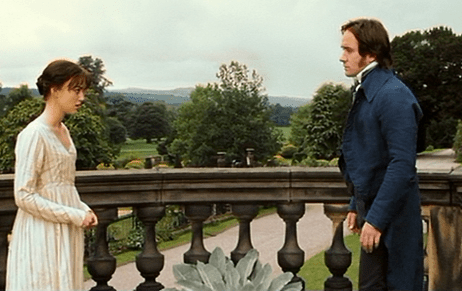
Lizzie and Darcy reflect the psyche’s struggle with pride, shame, and connection. (Pride & Prejudice (2005), Focus Features.)
Archetypes as Living Forces in Storytelling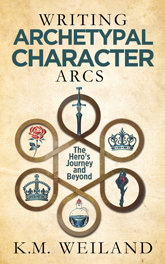
Writing Archetypal Character Arcs (affiliate link)
For writers, one of the most useful tools for enlivening the power of mythic storytelling is to access the innate power of character archetypes.
With all things archetypal, it is crucial to interact with archetypes not as simplistic stereotypes but as living forces. Put simply: we don’t get to dictate what archetypes do. When we have truly accessed them, they tell us what they will do. When we have truly understood them, we feel it all the way down to our bones. Archetypes are dynamic energies peopling initiatory arcs. They surface in different guises but always point to universal human epochs.
As writers, we can access these forces consciously to deepen our character arcs, themes, and story arcs. The most obvious way we can work with these archetypes is to learn about them through the old stories. But they are found everywhere. I would go so far as to say they are found in every story that works. More than that, they are inherent—if perhaps latent—within each of us.
As human beings (and especially as human beings with active imaginations), we already have a deep understanding and recognition of these archetypal forces—if we are brave enough to face them. This cannot be taken for granted. It can often feel much easier to ignore the call of initiation and transformation. Cutting the journey short before we finish the Dark Night of the Soul can often seem wiser. Ironically, remaining cozy and cynical in the affirming arms of despair can feel much safer than daring to keep walking into the unknown of transformation.
What archetypal storytelling—mythic storytelling—demands of us as storytellers is that we face the archetypes themselves with authenticity and with humility. Mythic storytelling demands that we listen to the deepest, loudest, softest truths within us. We know when what we are writing is mythic and archetypal—whether we call it that or not. We know when what we are writing is the truest thing it is possible for us to write. We know in our hearts. And I do not say “hearts” lightly. The heart is a much better storyteller than the head.
The head, however, remains a worthy ally on this journey. It is not, as it so often thinks, the protagonist. But it is a helpful sidekick. To that end, studying the mythic journeys in literature can be extremely helpful—whether the Hero’s Journey or the five further archetypal journeys I discuss in my book Writing Archetypal Character Arcs. (Writers can apply these insights practically through my Archetypal Character Arc Worksheets. This worksheet bundle is, in essence, a companion workbook to Writing Archetypal Character Arcs. If you’d like help charting any of the six archetypal character arcs—Maiden, Hero, Queen, King, Crone, and Mage—you can check out the worksheets I just released. If you want them all, be sure to check out the discounted bundle.)

Story is not just “about life.” It’s a dream we dream together. It is a map for transformation. If we look into the past, history tells us our storytellers were our seers, our shamans, our wayshowers, our most respected elders.
Now, we are all storytellers. We all bear this great burden to look beyond what everyone else can see and to hone the transformative truths that are meant to initiate not just us but every member of our tribe.
To do that, we must start by remembering what story really is. It is not just entertainment. It is not just escapism. It is not just pleasure. It is not just a source of income.
What is story? I believe the archetypal shape of story is, fundamentally, a truth. Perhaps even the Truth. It is the power to change the world—over and over and over and over again. It is the power to change us. It is the power to bypass our limited egoic perceptions of ourselves, others, and our world and to show us into the wyrdest depths of what it means to be human. It is a dream we dream that also dreams us. It is initiation. It is transformation. It is change. It is myth.
Frequently Asked QuestionsWhat does it mean to say all stories are myth?It means that beneath every plot and genre lies a universal archetypal pattern. From epic fantasies to contemporary romances, all stories echo mythic structures that reflect the psyche’s journey of transformation.Can hyper-realistic stories still be mythic?
Yes. Even the most realistic fiction carries symbolic depth if the writer taps into archetypal storytelling. A courtroom drama or slice-of-life novel can still follow the mythic blueprint of initiation, transformation, and return.Why do archetypes resonate so deeply with readers?
Because archetypes are not stereotypes. They are living psychological forces. When writers use archetypal character arcs, readers feel as though they are watching their own inner conflicts dramatized on the page.How can writers use archetypal character arcs in their stories?
Writers can use arcs like the Maiden, Hero, Queen, King, Crone, or Mage as blueprints for character development. These journeys help ensure stories resonate with mythic power and emotional authenticity.In Summary
At their core, all stories are myth. No matter the genre or style, narrative always springs from the archetypal blueprint of the psyche. Story is not simply a mirror of everyday life but a symbolic map of transformation—a dream we dream together. When writers embrace this mythic foundation, they create stories that not only entertain but initiate both writer and reader into deeper self-awareness and lasting change.
Key TakeawaysAll stories are myth. Beneath plot and genre lies the archetypal blueprint of transformation.Story is psyche. Every character and force reflects a facet of the self.Archetypes are alive. They are not tropes but dynamic psychological energies.Hyper-realism needs myth. Realism alone risks losing depth; archetypal foundation restores resonance.Story transforms. Writers and readers alike undergo initiation through narrative.Want More?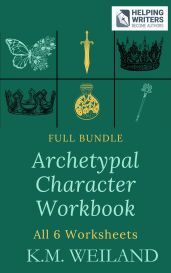
Archetypal Character Workbook (Full Bundle of 6)
If you’d like to put these insights into practice, explore my Archetypal Character Arc Worksheets—a series of six fillable, downloadable guides designed to help you chart mythic journeys for your characters. Each worksheet breaks down one of the six archetypal arcs—Maiden, Hero, Queen, King, Crone, and Mage–into structural beat sheets, reflective questions, and story prompts. Whether you’re writing epic fantasy or modern literary fiction, these tools will help you harness archetypal storytelling, deepen your characters, and unlock the mythic power within your narrative. Find the full set (including the discounted bundle) in my Etsy store.
Wordplayers, tell me your opinions! Do you see your own stories as mythic at their core? How do you think recognizing the archetypal foundation of storytelling might change the way you write? Tell me in the comments!Click the “Play” button to Listen to Audio Version (or subscribe to the Helping Writers Become Authors podcast in Apple Podcast, Amazon Music, or Spotify).
___
Love Helping Writers Become Authors? You can now become a patron. (Huge thanks to those of you who are already part of my Patreon family!)The post Why All Stories Are Myth—and How They Transform Us appeared first on Helping Writers Become Authors.




